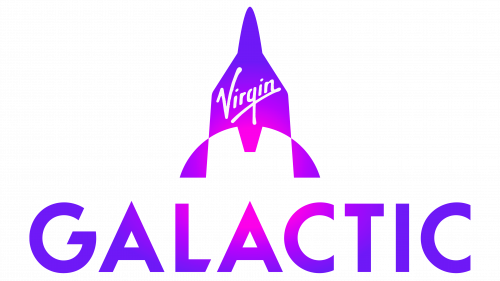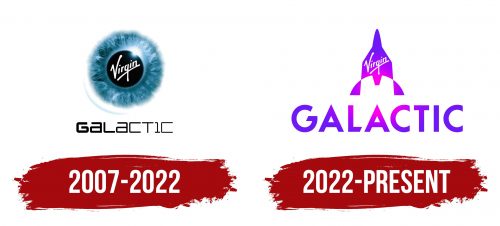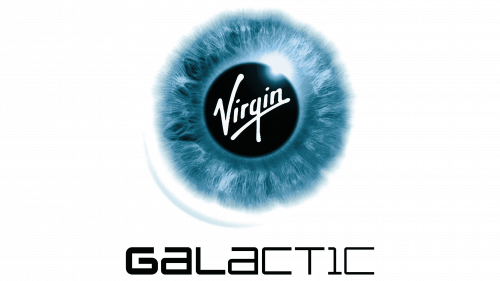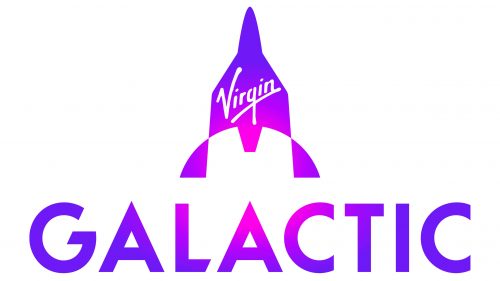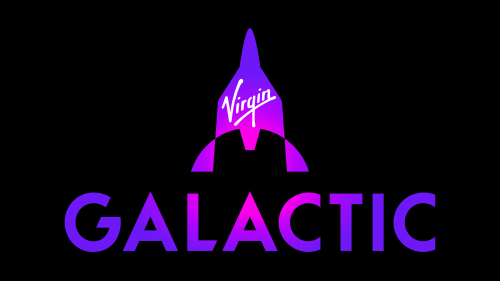The Virgin Galactic logo directly indicates the company’s occupation in space tourism. It conveys its determination, steadfastness, and resolve to undertake journeys to Earth’s orbital space. The emblem reflects the persistent nature of the aviation brand striving for uncharted heights.
Virgin Galactic: Brand overview
British businessman Richard Branson established Virgin Galactic in 2004 as a division of his Virgin Group corporation. After meeting with aerospace engineer Burt Rutan, who created SpaceShipOne, the first privately funded crewed spacecraft, Branson had the idea for the business.
Branson decided to invest in starting a commercial space enterprise after seeing the success of SpaceShipOne, which in 2004 was awarded the Ansari X Prize for achieving suborbital flight. The company aimed to provide tourists with suborbital space trips.
In 2005, the firm and Burt Rutan’s business, Scaled Composites, agreed to create SpaceShipTwo, a spacecraft that can carry visitors to the edge of space. With room for up to six passengers and two pilots, this ship was intended to be more spacious and comfortable than SpaceShipOne.
The United States State of New Mexico’s Spaceport America began to take shape in 2006. The building was to serve as the firm’s main launch pad.
WhiteKnightTwo, the carrier aircraft, and the SpaceShipTwo prototype were unveiled in 2008. This was a noteworthy turning point for the business, demonstrating observable advancements in space tourism technology development.
In 2010, WhiteKnight Two made its first autonomous flight, and the first SpaceShip Two spaceship, VSS Enterprise, was unveiled.
However, the enterprise had a significant setback in 2014. One of the pilots perished in the accident of VSS Enterprise during a test flight. The test program was temporarily suspended due to this unfortunate tragedy, significantly damaging the corporation.
The firm kept working on the project despite this disaster. VSS Unity, the new spaceship that replaced VSS Enterprise, debuted in 2016.
The year 2018 was crucial for the company. On December 13, VSS Unity achieved its first suborbital flight at an altitude of 82.7 kilometers, which proved the company’s technology viable.
The business listed its shares on the New York Stock Exchange in 2019, turning the corporation into a publicly traded entity. It became the first space tourism company to go public as a result.
2020 saw the continuation of VSS Unity test flights. The organization also revealed the spacecraft’s cabin layout, illustrating what space travel might entail.
The enterprise accomplished several noteworthy firsts in 2021. On May 22, VSS Unity launched from New Mexico on its first suborbital flight. On July 11, Richard Branson piloted the first flight with a complete crew.
The firm carried out more test flights in 2022. The VSS Unity spacecraft was utilized to execute multiple suborbital missions with great success. The purpose of these flights was to improve the systems on board the spacecraft and get ready for the start of commercial operations.
The company presented the VSS Imagine, the first vessel of the SpaceShip III class, that same year. This spacecraft’s enhanced design enabled more frequent flights compared to earlier generations. Additionally, the VSS Imagine’s modular nature made updates and maintenance easier.
The enterprise achieved a noteworthy milestone in 2023 when it launched its first commercial suborbital flights. The inaugural journey, featuring paid passengers, transpired throughout the year, garnering significant worldwide press coverage. These flights established the brand as a pioneer in space tourism and heralded the start of a new era in the industry.
The business also declared ambitions to increase its fleet size that year. Plans were made to build more SpaceShip III class spacecraft, which should lead to more frequent flights and more passengers able to travel below Earth’s surface.
In 2024, the firm made a significant technological advancement. The business unveiled plans for a brand-new spaceship that could reach low Earth orbit. Although it is still in the early phases of development, this project showed the enterprise’s desire to go beyond suborbital travel and provide passengers with longer-duration space travel experiences.
In 2024, the organization partnered with several research institutions to conduct scientific studies while conducting commercial flights.
Meaning and History
What is Virgin Galactic?
It is a British-American aerospace and space tourism company within the Virgin Group, founded by Sir Richard Branson. The company aims to provide suborbital flights into space for tourists and explorers, making space travel accessible to individuals. Space flights involve taking passengers to the edge of space where they can experience a few minutes of weightlessness and see the Earth from a great height. The company’s VSS Unity spacecraft launches from the VMS Eve carrier aircraft and ascends more than 50 miles above the Earth’s surface. The company innovates in the burgeoning space tourism industry, focusing on safety and unforgettable spaceflight experiences for its customers.
2007 – 2022
Virgin Galactic’s emblem is as complex as the mission the company has undertaken, for taking tourists to orbit is no easy task. However, this complexity helps the logo remain modern and does not hinder its perception, as it contains minimal elements that express a profound idea. Therefore, despite the trend toward simplifying design, this symbol conveys a powerful message to the public and looks harmonious within the declared concept. It excellently serves as a marketing tool, attracting attention and inviting those eager to take advantage of a unique opportunity to see the universe with their own eyes.
Based on this idea, the logo consists of an image of an eye. This is its originality. The eye is so realistic that it precisely conveys every stroke of the iris, suggesting the thought of gazing into space. The gray-blue veins with a dark hue invite one to look into the unknown and enjoy the fantastic spectacle. The colors transition into an emerald shade, adding mystery and elegance to the emblem. Moreover, the edges of the eyeball blend so harmoniously into the light surrounding that it does not come across as off-putting.
In addition, the designers drew a parallel between the gray-blue eye and our planet, which looks like a sphere of the same color from space. Thus, the idea of viewing Earth from afar is accurately realized here. To reinforce this feeling, the artists drew a light crescent-like stroke in the lower left, reminiscent of an orbit, making the round logo resemble a blue planet in the boundless cosmos.
In the center of the iris, with its numerous shades and highlights, there is a black circle, representing the pupil and the dark abyss of the night sky. It is also an unexplored galaxy full of mysteries. In the middle lies the first part of the company’s name – “Virgin.” It is written diagonally in a font that imitates neat handwriting. The letters are lowercase (except for the first), bold, and sans-serif. Below is a long underline stretching beneath the word: it starts from the “n,” sloping downward, and ends at the tip of the “V.”
The second part of the name is placed beneath the stylized eye. Its unique feature is that the word “Galactic” gradually loses its color intensity: it starts black and ends looking light. The reduction in the boldness of the glyphs achieves this deceptive visual effect. In other words, the strokes of the “G” are thick and massive, while those of the “C” are narrow and thread-like. This adds variety to the emblem and makes it dynamic.
2022 – today
The Virgin Galactic logo has undergone a major transformation: from an abstract and figurative 3D effect, it has turned into a realistic and flat object. It features many completely new details, which still promote the idea of space tourism but in a different, more straightforward, and traditional form. The main focus is on recognizability, aiming to attract more customers who grasp the concept instantly—without symbolism or hints—since the target audience consists of businessmen, who are the primary market for costly journeys to Earth’s orbit.
The main feature of the emblem is a rocket pointing upward. It is depicted in a cubist style, with many geometric shapes with blurred edges. This restrained avant-garde approach fits well with the new logo because it helps to represent not only the rocket but also the Earth from which it launches. The spacecraft’s main components are visible, and the first part of the company’s name runs diagonally across it, ready to send tourists on journeys beyond the clouds. The lettering precisely matches the previous version, with no differences.
However, the second half of the name surprises with its size: it is much larger than the upper inscription and serves as a platform for launching into the universe. The word “Galactic” is set in uppercase letters, where both “A” s mimic the shape of the rocket, and the “L” between them has a diagonal cut at the bottom, fitting harmoniously into the design. The glyphs have no serifs but do have rounded elements that balance the angles effectively. Overall, the text part is much wider than the graphic symbol to highlight the insignificance of human achievements compared to the vastness of the galactic system. This is also the company’s way of showcasing its boundless potential.
The Virgin Galactic logo’s color deserves special attention, as it is very unusual and sharply contrasts with the traditional image of a blue-and-white planet. In this case, the designers were not aiming to depict Earth; instead, they sought to show space with an invisible ultraviolet spectrum, as “ultra” suggests going beyond something, and “violet” is associated with purple. Ultraviolet represents electromagnetic radiation occupying the spectral range between visible and X-ray radiation, hinting at the ability to see the invisible.
The lower inscription and the rocket are entirely purple, varying from barely noticeable pink to deep violet. The gradient coloring makes the emblem even more mysterious, as it spreads not vertically but in a circular pattern—from a light center to dark edges. As a result, the logo appears to shimmer under bright light.
